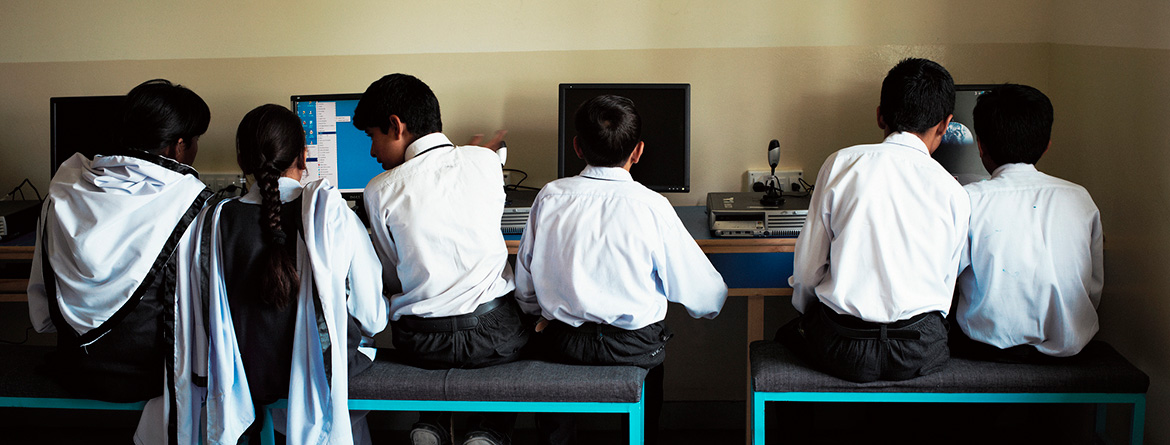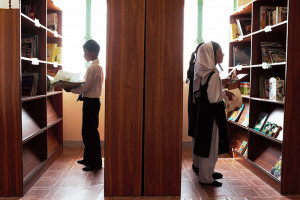
Libraries
The purpose of DIL’s Reading and Libraries Program is to support reading development and comprehension, while inculcating a love and habit of reading. The program builds on DIL’s balanced literacy instruction by providing access to reading materials, providing shared and independent reading experiences, and monitoring student progress toward reading fluently with comprehension.
The DIL Reading and Libraries Program consists of classroom materials, teacher training, access to books and activities designed to foster a love of reading. Our localized teaching and learning materials comprise a systematic approach to literacy instruction including alphabetic principles, phonemic awareness, reading fluently, vocabulary development, and comprehension. The teacher training aspect of our program is based on research based pedagogy, follows the Pakistan National Standards, is tailored to build capacity of rural teachers and is reinforced in both Urdu and English Language Arts. We provide students with access to books through DIL school libraries, which also serves as the site for various reading activities, including reading assessments to monitor growth in reading.

“I had no idea about library and about work of a librarian. Before joining this school, I had not used library even I had not seen library in any school….With the guidance principal and demo classes of senior teachers, I learned how to engage students in library period.”
Sana, librarian at DIL Junior -3 Mehran School, Orangi
Information Technology
Departmental Goals
DIL’s IT Program for Schools initiative is focused on reducing the digital divide and improve the quality of education by providing a technology assisted learning environment, interactive learning resources and capacity building of local staff members.
 Goal of DIL IT Program for Schools initiative is to reduce the digital divide and improve the quality of education in rural areas of Pakistan by providing a technology assisted learning environment, interactive learning resources and building capacity of local staff members.
Goal of DIL IT Program for Schools initiative is to reduce the digital divide and improve the quality of education in rural areas of Pakistan by providing a technology assisted learning environment, interactive learning resources and building capacity of local staff members.
The core objectives of this initiative are:
- Develop Technology Literacy among rural teachers and students
- Integrate Information Technology with all curriculum areas
- Improve 21st Century Skills of teachers and students
- Provide basic Computer Skills for today’s global marketplace
Students’ Quote
A student from Lower Dir (Zarbaig) was questioned during OLPC-XO’s pilot study. During the baseline he was asked in Pashto after being shown a laptop:

Officer: Da Se De (What is this?)
Student: After a long pause and with trepidation he replied “Da Calculator de, (It is a Calculator)”.
After one year of the project the same question was asked from the same student
Officer: Da Se De (What is this?)
Student: Da Computer De (This is a computer)
Officer: Da Se kai? (What does it do?)
Student: With a confident smiling face he said, “Munga de mande English wayo, Math sums kawo, drawing kawo ao de ke calculator hum shta” (we can read English, we can do math sums, we can do drawing, and it has a calculator also).
